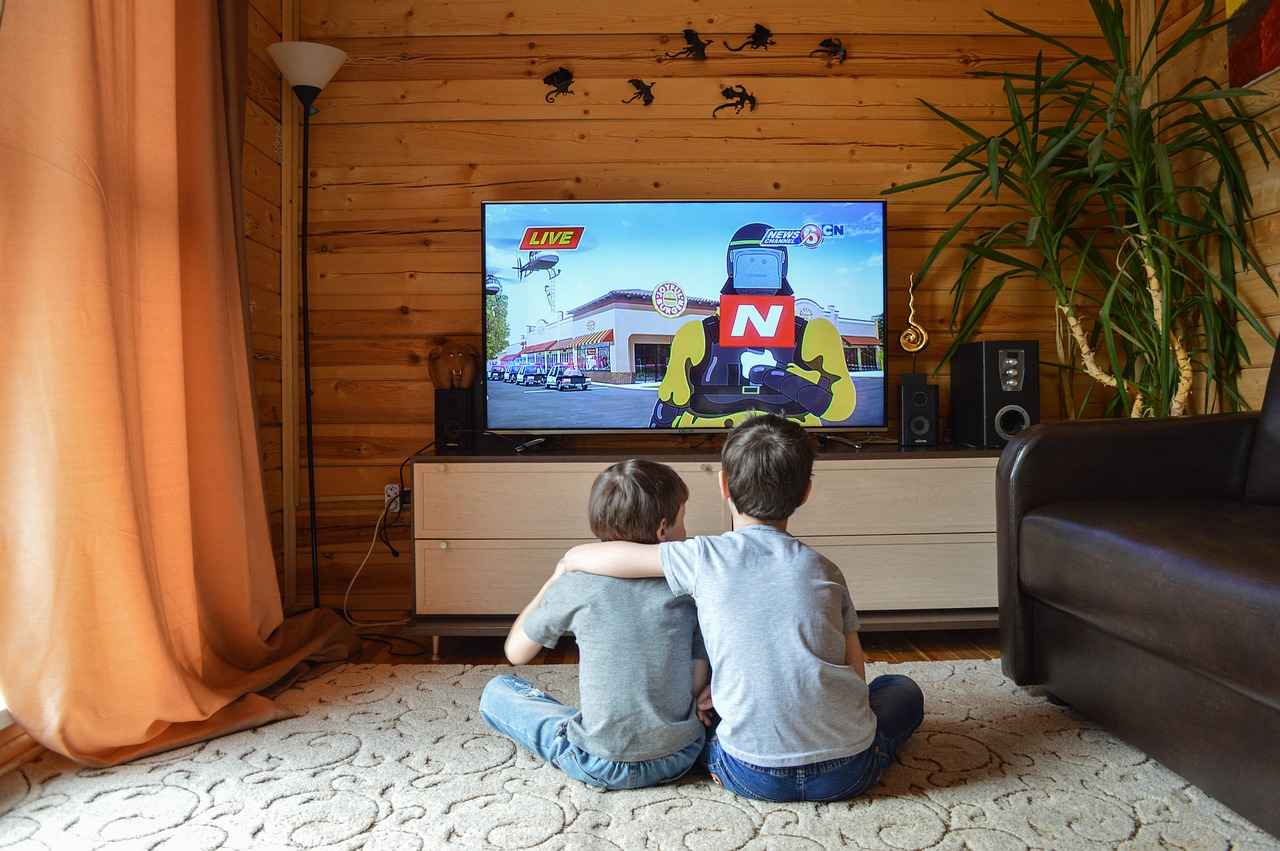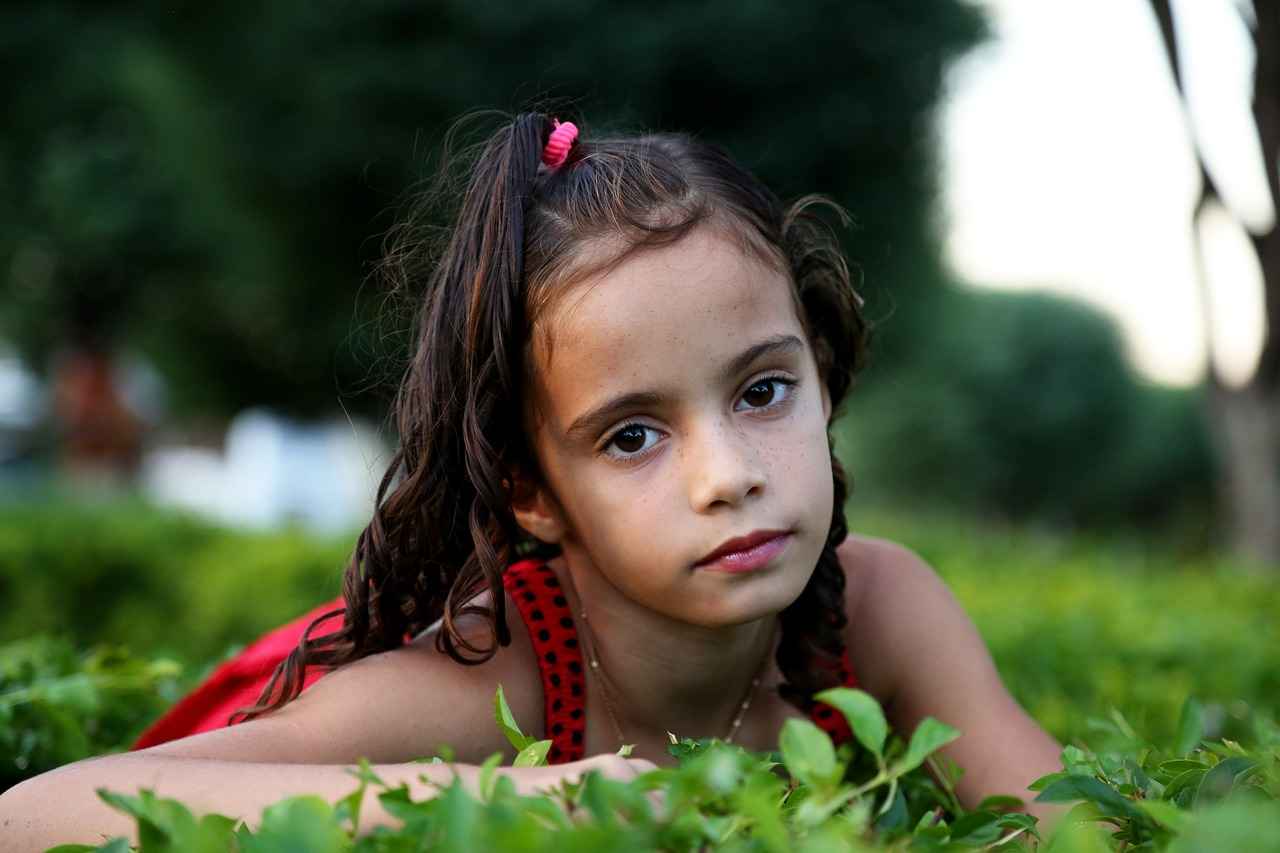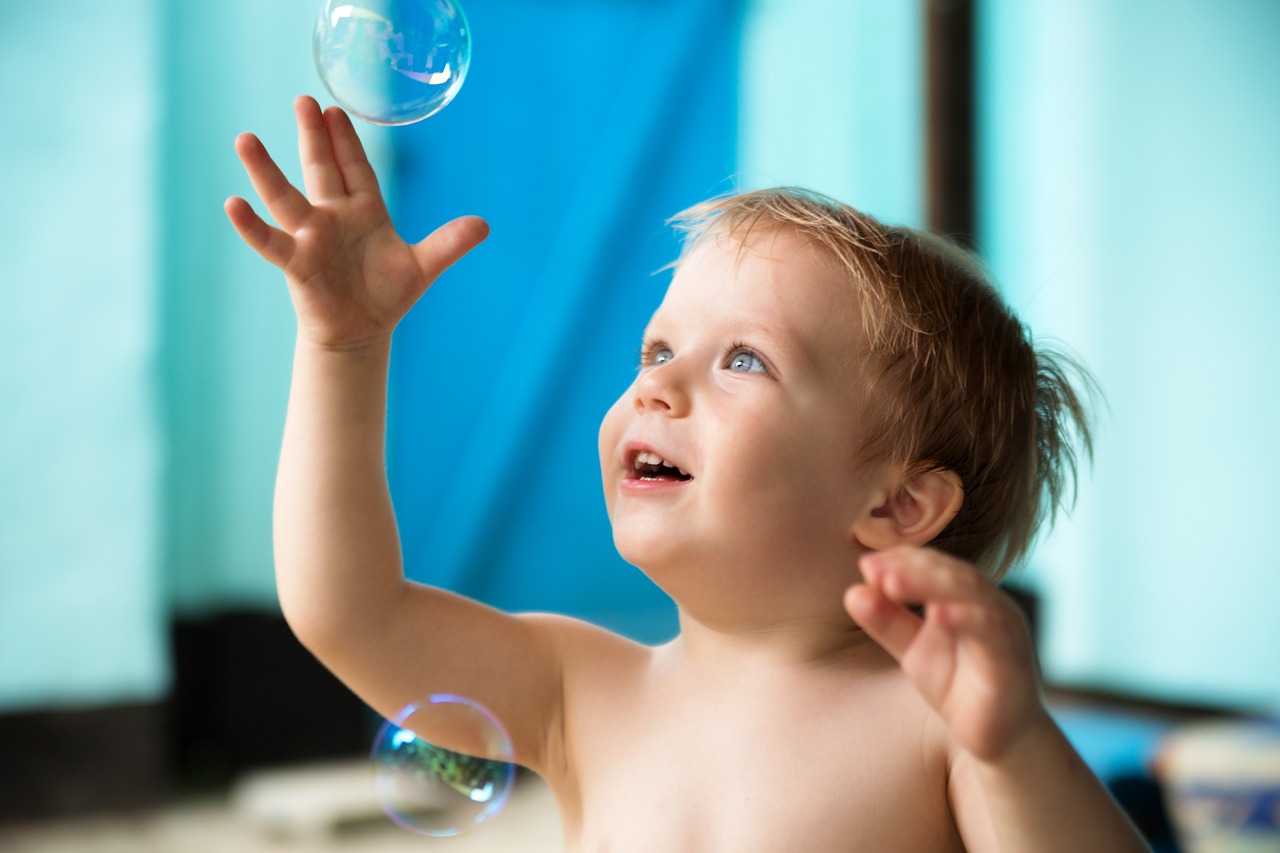This article explores a selection of engaging and thought-provoking films suitable for children, aiming to inspire curiosity, creativity, and critical thinking among young audiences.
Why Movies Matter for Children
Movies play a crucial role in children’s development, providing entertainment while also fostering imagination, empathy, and social skills through storytelling and character development. They can serve as a gateway to understanding complex themes and emotions.
Top Thought-Provoking Movies for Kids
- Inside Out: Understanding Emotions
- Wall-E: Environmental Awareness
- The Iron Giant: Friendship and Sacrifice
- Spirited Away: Adventure and Self-Discovery
Inside Out: Understanding Emotions
Inside Out offers a creative exploration of emotions, helping children understand their feelings and the importance of emotional balance in their lives. This film illustrates how emotions interact and influence decisions, making it relatable for young viewers.
The Importance of Emotional Awareness
Emotional awareness is vital for children’s development, as it helps them navigate their feelings and build healthier relationships with others. By watching Inside Out, children learn to articulate their emotions and recognize the emotions of others.
Wall-E: Environmental Awareness
Wall-E presents a futuristic tale that emphasizes the importance of taking care of our planet, encouraging kids to think about environmental issues and sustainability. The film serves as a call to action for young audiences to consider their impact on the world.
Animation vs. Live Action: Which is Better?
Both animation and live-action films have unique benefits for children. Understanding these differences can help parents choose the right movies for their kids.
- Benefits of Animated Films: Captivating visuals and imaginative stories spark creativity and engagement.
- Advantages of Live-Action Movies: Provide relatable scenarios and real-life lessons, fostering deeper connections.
How to Choose the Right Movie for Your Child
Selecting an appropriate movie involves considering age, maturity level, and themes presented. This ensures a positive viewing experience.
- Age-Appropriate Content: Understanding ratings and content warnings can guide parents in their choices.
- Discussing Themes After Viewing: Engaging in discussions can enhance understanding and encourage expression.
Conclusion: Movies as a Tool for Growth
In conclusion, thoughtful movie selections can serve as valuable tools for children’s emotional and intellectual growth. By fostering a love for storytelling and critical thinking from a young age, parents can help shape well-rounded individuals.

Why Movies Matter for Children
Movies are not just a source of entertainment; they are a vital component of children’s development. Through the art of storytelling, films provide a unique platform for children to explore complex ideas and emotions. As young audiences immerse themselves in different narratives, they cultivate imagination, enhance empathy, and develop essential social skills.
One of the primary benefits of watching movies is the opportunity for children to engage with diverse characters and scenarios. This exposure allows them to see the world from multiple perspectives, fostering a sense of understanding and compassion for others. For instance, films that depict friendship, conflict resolution, or overcoming obstacles can teach valuable life lessons that resonate with young viewers.
Moreover, movies often present moral dilemmas that challenge children to think critically. By observing characters making decisions, children are prompted to reflect on their values and beliefs. This process not only enhances their critical thinking skills but also encourages them to question and analyze the world around them.
Additionally, films can serve as a springboard for discussions between parents and children. After watching a movie, parents can engage their kids in conversations about the themes, characters, and emotions portrayed. This dialogue can help children articulate their feelings and thoughts, further enhancing their emotional intelligence.
In conclusion, movies are a powerful tool in children’s development. They not only entertain but also educate, inspire, and foster growth in various aspects of a child’s life. By selecting thoughtful films, parents can help their children navigate the complexities of their emotions and the world around them.

Top Thought-Provoking Movies for Kids
This section presents a carefully curated selection of films that not only entertain but also promote critical thinking and emotional intelligence in young viewers. These movies are designed to inspire curiosity and provoke thoughtful discussions, making them ideal for children seeking deeper messages.
Each film on this list serves as a catalyst for important conversations about emotions, relationships, and the world around us. By engaging with these stories, children can learn to navigate their feelings and develop a better understanding of themselves and others.
| Movie Title | Key Themes | Age Group |
|---|---|---|
| Inside Out | Emotional Awareness, Coping with Change | 8+ |
| Wall-E | Environmental Awareness, Responsibility | 7+ |
| Big Hero 6 | Friendship, Overcoming Grief | 10+ |
| The Iron Giant | Acceptance, Anti-Violence | 8+ |
| Spirited Away | Identity, Courage | 10+ |
These films not only entertain but also encourage children to think critically about important life lessons. For instance, Inside Out provides a unique perspective on emotional health, while Wall-E inspires a sense of responsibility towards the environment. By watching these movies, children can gain insights that will help shape their understanding of the world.
Incorporating discussions about the themes presented in these films can further enhance their impact. Parents and educators can use these movies as a springboard for conversations about emotions, decision-making, and social issues, fostering an environment where children feel safe to express their thoughts and feelings.
Overall, this curated list of thought-provoking films serves as a valuable resource for parents and educators looking to enrich children’s viewing experiences. By choosing movies that challenge young minds and provoke meaningful discussions, we can help nurture a generation of empathetic and critical thinkers.
Inside Out: Understanding Emotions
The animated film Inside Out offers a creative exploration of emotions, helping children understand their feelings and the importance of emotional balance in their lives. By personifying emotions as characters, the film provides a unique perspective that resonates with young audiences.
Why Emotional Awareness is Important
- Emotional Development: Understanding emotions is vital for children’s development, as it helps them navigate their feelings and build healthier relationships with others.
- Coping with Change: The film teaches valuable lessons about coping with change and accepting the complexities of growing up, making it relatable for children.
Key Themes in Inside Out
- Emotional Balance: The film emphasizes the need for a balance of emotions, showing that it’s okay to feel sad or angry at times.
- Friendship and Support: It highlights the importance of friends and family in helping us through tough times.
Discussion Points for Parents
- How do you feel when you experience different emotions?
- Can you think of a time when you had to cope with change?
In conclusion, Inside Out serves as a valuable resource for children to learn about their emotions. By engaging with the film’s themes, parents can foster discussions that enhance emotional intelligence and resilience in their children.
Inside Out
is a groundbreaking animated film produced by Pixar Animation Studios, released in 2015. It takes viewers on a journey through the mind of a young girl named Riley, showcasing the complex emotions that shape her experiences. This film is not only entertaining but also serves as a valuable educational tool for children and adults alike.
Why Inside Out is Important for Kids
- Emotional Understanding: The film introduces children to five core emotions: Joy, Sadness, Anger, Fear, and Disgust. Each character embodies these feelings, helping kids identify and understand their own emotions.
- Acceptance of Feelings: Inside Out teaches that all emotions are valid and necessary, emphasizing that it’s okay to feel sad or angry at times.
- Dealing with Change: The storyline addresses the challenges of moving to a new city and the emotional turmoil that comes with it, making it relatable for children facing similar changes.
Lessons Learned from Inside Out
| Lesson | Description |
|---|---|
| Emotional Balance | Understanding that joy and sadness can coexist is crucial for emotional well-being. |
| Communication | Encourages children to express their feelings and talk about their emotions openly. |
| Growth Through Adversity | Shows that challenges can lead to personal growth and deeper connections with others. |
Conclusion: The Impact of Inside Out
In conclusion, is more than just a film; it is a powerful tool for teaching children about emotions and the importance of mental health. By engaging with this film, kids can develop a better understanding of their feelings, learn to cope with change, and grow emotionally. This makes it an essential addition to any child’s movie collection.
offers a creative exploration of emotions, helping children understand their feelings and the importance of emotional balance in their lives.
Interesting Movies for Kids: Thought-Provoking Films for Young Minds
This article explores a selection of engaging and thought-provoking films suitable for children, aiming to inspire curiosity, creativity, and critical thinking among young audiences.
Why Movies Matter for Children
Movies play a crucial role in children’s development, providing entertainment while also fostering imagination, empathy, and social skills through storytelling and character development.
Top Thought-Provoking Movies for Kids
- Inside Out: Understanding Emotions
Inside Out offers a creative exploration of emotions, helping children understand their feelings and the importance of emotional balance in their lives.
- The Importance of Emotional Awareness: Emotional awareness is vital for children’s development, as it helps them navigate their feelings and build healthier relationships with others.
- Lessons on Coping with Change: The film also teaches valuable lessons about coping with change and accepting the complexities of growing up, making it relatable for children.
- Wall-E: Environmental Awareness
Wall-E presents a futuristic tale that emphasizes the importance of taking care of our planet, encouraging kids to think about environmental issues and sustainability.
Animation vs. Live Action: Which is Better?
- Benefits of Animated Films: Animated films often captivate young audiences with vibrant visuals and imaginative stories, sparking creativity and engagement in viewers.
- Advantages of Live-Action Movies: Live-action films can provide relatable scenarios and real-life lessons, helping children connect more deeply with the characters and their journeys.
How to Choose the Right Movie for Your Child
- Age-Appropriate Content: Understanding age ratings and content warnings can guide parents in choosing films that are suitable for their children’s developmental stage.
- Discussing Themes After Viewing: Engaging in discussions about the film’s themes post-viewing can enhance understanding and encourage children to express their thoughts and feelings.
Conclusion: Movies as a Tool for Growth
In conclusion, thoughtful movie selections can serve as valuable tools for children’s emotional and intellectual growth, fostering a love for storytelling and critical thinking from a young age.
The Importance of Emotional Awareness
Emotional awareness is a fundamental aspect of children’s development, playing a critical role in how they understand and manage their feelings. As children grow, they encounter a variety of emotions, from joy and excitement to sadness and frustration. Developing emotional awareness allows them to navigate these feelings effectively, leading to healthier interactions with peers, family, and themselves.
When children are emotionally aware, they can identify their feelings and articulate them appropriately. This skill is essential for fostering healthy relationships. For instance, when a child feels upset, being able to express this emotion rather than acting out can lead to more constructive conversations with friends and caregivers. This ability to communicate feelings can significantly reduce conflicts and misunderstandings.
Moreover, emotional awareness contributes to empathy. When children understand their emotions, they are better equipped to recognize and respond to the emotions of others. This understanding nurtures compassion and kindness, essential traits for building strong social bonds. For example, a child who can identify their own sadness may be more likely to notice when a peer is feeling down and offer support.
Furthermore, emotional awareness is linked to academic success. Children who can manage their emotions often perform better in school settings. They are more likely to engage in classroom discussions, collaborate with classmates, and approach learning with a positive attitude. This emotional intelligence can lead to improved focus and resilience in the face of challenges.
In conclusion, fostering emotional awareness in children is not just beneficial; it is vital for their overall development. By equipping them with the tools to understand and express their feelings, we pave the way for healthier relationships, enhanced empathy, and greater success in various aspects of their lives.
Lessons on Coping with Change
The journey of growing up is often filled with transitions and challenges. One of the most valuable lessons that children can learn from films, particularly from movies like Inside Out, is how to cope with these inevitable changes. The film portrays the inner workings of a young girl’s mind as she navigates a significant life transition, illustrating how emotions can shape our experiences.
As children watch the characters face various situations, they can relate to the feelings of confusion, joy, and even sadness. This relatability is crucial as it allows young viewers to understand that experiencing a range of emotions is a normal part of life. The film emphasizes that it’s okay to feel sad or angry during difficult times, and that these emotions are valid and necessary for personal growth.
Moreover, Inside Out encourages children to embrace change rather than fear it. The character of Riley learns that change can lead to new opportunities and experiences, teaching viewers that adapting to change is a vital skill. This lesson is particularly important in today’s fast-paced world, where children are often faced with new environments, friendships, and challenges.
In addition to emotional resilience, the film highlights the importance of communication and support from family and friends. By showcasing how Riley’s parents help her process her feelings, the movie illustrates that having a support system can make navigating change much easier. Children learn that they are not alone in their experiences and that reaching out for help is a sign of strength.
In conclusion, films like Inside Out serve as powerful tools for teaching children about the complexities of growing up. They not only entertain but also provide valuable lessons on coping with change, encouraging emotional intelligence and fostering resilience that will benefit children throughout their lives.
Wall-E: Environmental Awareness
The animated film Wall-E presents a captivating futuristic tale that emphasizes the importance of taking care of our planet. Set in a post-apocalyptic world, the story follows a small waste-collecting robot named Wall-E, who embarks on a journey that ultimately leads to a greater understanding of environmental issues and sustainability.
Why Environmental Awareness is Critical for Kids
- Understanding Our Impact: Children learn about the impact of waste and pollution on the environment.
- Encouraging Responsibility: The film promotes the idea of taking responsibility for our planet’s health.
- Inspiring Action: Wall-E inspires kids to think critically about their own habits and the importance of conservation.
Key Themes in Wall-E
- Consumerism: The film critiques excessive consumerism and its consequences on the environment.
- Friendship: Wall-E’s relationship with EVE highlights the importance of companionship in overcoming challenges.
- Hope for the Future: The film conveys a message of hope, suggesting that positive change is possible.
Conclusion: A Lesson for Future Generations
In conclusion, Wall-E serves as an engaging and thought-provoking film for children that not only entertains but also educates about environmental stewardship. By fostering a sense of responsibility and encouraging young viewers to think critically about their actions, Wall-E helps cultivate a generation that is more aware and proactive in protecting our planet.
Wall-E
is a captivating animated film that not only entertains but also imparts important lessons about environmental awareness and the impact of human actions on the planet. This film resonates with audiences of all ages, particularly children, by blending humor, emotion, and a powerful message.
Why Wall-E Matters
The film follows the journey of a small waste-collecting robot named , who is left to clean up a deserted Earth. Through his adventures, the movie explores themes of loneliness, love, and environmental responsibility.
Key Themes in Wall-E
- Environmental Awareness: Wall-E encourages viewers to reflect on their relationship with the planet and the importance of sustainability.
- Technology and Humanity: The film presents a future where technology has overtaken human interaction, prompting discussions about balance.
- Connection and Love: Wall-E’s relationship with EVE highlights the significance of companionship and emotional bonds.
Benefits of Watching Wall-E
Parents can use Wall-E as a tool to teach children about environmental stewardship and the importance of caring for our world. Engaging children in discussions about the film’s themes can help them develop critical thinking skills and emotional intelligence.
Conclusion: Wall-E as an Educational Tool
In conclusion, is more than just an animated film; it is a profound exploration of critical issues that affect our world today. By watching and discussing this film, children can learn valuable lessons about sustainability, technology, and the power of connection, making it a worthwhile addition to their viewing list.
presents a futuristic tale that emphasizes the importance of taking care of our planet, encouraging kids to think about environmental issues and sustainability.
Interesting Movies for Kids: Thought-Provoking Films for Young Minds
This article explores a selection of engaging and thought-provoking films suitable for children, aiming to inspire curiosity, creativity, and critical thinking among young audiences.
Why Movies Matter for Children
Movies play a crucial role in children’s development, providing entertainment while also fostering imagination, empathy, and social skills through storytelling and character development.
Top Thought-Provoking Movies for Kids
- Inside Out: Understanding Emotions
- Inside Out offers a creative exploration of emotions, helping children understand their feelings and the importance of emotional balance in their lives.
- The Importance of Emotional Awareness: Emotional awareness is vital for children’s development, as it helps them navigate their feelings and build healthier relationships with others.
- Lessons on Coping with Change: The film teaches valuable lessons about coping with change and accepting the complexities of growing up, making it relatable for children.
- Wall-E: Environmental Awareness
- Wall-E presents a futuristic tale that emphasizes the importance of taking care of our planet, encouraging kids to think about environmental issues and sustainability.
Animation vs. Live Action: Which is Better?
- Benefits of Animated Films: Animated films often captivate young audiences with vibrant visuals and imaginative stories, sparking creativity and engagement in viewers.
- Advantages of Live-Action Movies: Live-action films can provide relatable scenarios and real-life lessons, helping children connect more deeply with the characters and their journeys.
How to Choose the Right Movie for Your Child
- Age-Appropriate Content: Understanding age ratings and content warnings can guide parents in choosing films that are suitable for their children’s developmental stage.
- Discussing Themes After Viewing: Engaging in discussions about the film’s themes post-viewing can enhance understanding and encourage children to express their thoughts and feelings.
Conclusion: Movies as a Tool for Growth
In conclusion, thoughtful movie selections can serve as valuable tools for children’s emotional and intellectual growth, fostering a love for storytelling and critical thinking from a young age.
Animation vs. Live Action: Which is Better?
When it comes to selecting movies for children, both animation and live-action films offer distinct advantages. Understanding these differences is essential for parents aiming to provide the best viewing experiences for their kids.
Benefits of Animated Films
- Visual Appeal: Animated films often feature vibrant colors and imaginative worlds that captivate young audiences. This visual stimulation can enhance creativity and encourage children to think outside the box.
- Storytelling Flexibility: Animation allows for fantastical narratives that may not be feasible in live-action. This encourages children to explore their imaginations and engage with stories in a unique way.
- Emotional Connection: Many animated films tackle complex emotions and situations, providing children with relatable characters and scenarios that help them understand their feelings.
Advantages of Live-Action Movies
- Realism: Live-action films often depict real-life scenarios that children can relate to, making the lessons and messages more impactful.
- Character Development: The portrayal of real actors can foster a deeper emotional connection, as children may see themselves in the characters’ journeys and struggles.
- Life Lessons: Live-action movies frequently address themes such as friendship, courage, and perseverance, providing valuable life lessons through relatable storytelling.
Making the Right Choice for Your Child
Ultimately, the choice between animation and live-action should be guided by the child’s interests and maturity level. Both genres have the potential to educate and entertain, but the key is to select films that align with your child’s developmental stage and emotional readiness.
In conclusion, both animation and live-action films hold unique benefits that can enrich a child’s viewing experience. By understanding these differences, parents can make informed decisions that foster a love of storytelling and critical thinking in their children.
Benefits of Animated Films
Animated films hold a special place in the hearts of children and adults alike. These films are not just about entertainment; they serve as a powerful medium for education and emotional development. Through their vibrant visuals and imaginative narratives, animated films can significantly enhance a child’s creativity and engagement.
One of the primary benefits of animated films is their ability to spark imagination. The colorful characters and fantastical worlds invite children to explore their creativity. For instance, movies like Finding Nemo and Frozen transport viewers into magical realms that encourage them to dream big and think outside the box.
Moreover, animated films often convey important life lessons in a manner that is accessible and relatable to young audiences. For example, films such as Kung Fu Panda teach children about perseverance, friendship, and self-discovery through engaging storytelling. These lessons are often wrapped in humor and adventure, making them enjoyable to learn.
Another significant aspect of animated films is their ability to foster empathy in children. By connecting with the characters’ emotions and challenges, young viewers learn to understand and share the feelings of others. This emotional connection helps develop their social skills and enhances their ability to navigate relationships.
Additionally, animated films can serve as a catalyst for discussions between parents and children. After watching a film, parents can engage their children in conversations about the themes presented, encouraging critical thinking and reflection. This interaction not only deepens the child’s understanding but also strengthens the parent-child bond.
In conclusion, animated films are more than just a source of entertainment; they are invaluable tools for personal growth and development. By captivating young audiences with their imaginative stories and vibrant visuals, these films inspire creativity, empathy, and critical thinking, making them essential viewing for children.
Advantages of Live-Action Movies
Live-action films hold a unique place in children’s entertainment, offering a distinctive set of advantages that can significantly enhance their viewing experience. Unlike animated films, live-action movies often feature real actors and settings, which can create a more immersive experience for young audiences. Here are some key advantages that make live-action films particularly impactful:
- Realism and Relatability: Live-action movies often depict real-world scenarios that children can relate to. This connection allows kids to see themselves in the characters’ journeys, making the stories resonate on a deeper emotional level.
- Life Lessons: Many live-action films tackle important themes such as friendship, courage, and resilience. Through the characters’ experiences, children can learn valuable life lessons that extend beyond the screen.
- Emotional Connection: Seeing real people portray emotions can help children understand and process their own feelings. Live-action films often showcase complex emotional situations that can spark discussions about empathy and understanding.
- Cultural Awareness: Live-action films can introduce children to diverse cultures and lifestyles, broadening their perspectives and fostering a sense of global awareness.
- Inspiration: Real-life stories, especially those based on true events, can inspire children to pursue their dreams and overcome challenges, reinforcing the idea that they can achieve greatness in their own lives.
In conclusion, live-action films serve not only as a source of entertainment but also as a powerful medium for education and personal growth. By presenting relatable scenarios and real-life lessons, these films help children forge deeper connections with the characters and their journeys, ultimately enriching their understanding of the world around them.
How to Choose the Right Movie for Your Child
Selecting an appropriate movie for children is a task that requires careful consideration. It is essential to take into account various factors such as the child’s age, maturity level, and the themes presented in the film. This thoughtful approach ensures a positive and enriching viewing experience for young audiences.
- Age Appropriateness: Movies are categorized by age ratings, which serve as a guideline for parents. Understanding these ratings can help you select films that are suitable for your child’s developmental stage. For instance, animated movies often cater to younger audiences with simple narratives, while more complex stories may be suitable for older children.
- Maturity Level: Every child is unique in their emotional and cognitive development. It’s crucial to assess whether your child can handle certain themes or situations depicted in the film. For example, a movie that tackles the concept of loss may be appropriate for a mature child but could be distressing for a younger one.
- Themes and Messages: Consider the underlying messages of the movie. Films that promote positive values like friendship, perseverance, and empathy can serve as excellent teaching tools. Conversely, movies with negative themes or excessive violence should be avoided to protect young minds.
Moreover, engaging in discussions with your child after the movie can enhance their understanding of the themes and encourage them to express their thoughts and feelings. This practice not only reinforces the lessons learned but also fosters critical thinking and emotional intelligence.
In conclusion, choosing the right movie for your child involves a balanced approach that considers age, maturity, and thematic content. By making informed decisions, you can provide your child with a rewarding cinematic experience that entertains and educates.

Age-Appropriate Content
When it comes to selecting films for children, understanding age ratings and content warnings is essential for parents. These guidelines serve as a roadmap, helping caregivers navigate the vast array of movies available and ensuring that the content aligns with their children’s developmental stages.
Age ratings, such as G (General Audience), PG (Parental Guidance), PG-13 (Parents Strongly Cautioned), and R (Restricted), provide a quick reference to the suitability of a film for different age groups. For instance, a G-rated movie is generally appropriate for all ages, while a PG-13 film may contain material that parents might consider inappropriate for children under 13.
Content warnings can also highlight specific themes or scenes that may be challenging for younger viewers. These might include violence, language, sexual content, or substance use. By paying attention to these warnings, parents can make informed decisions about whether a film is suitable for their child.
Moreover, it’s important to consider the maturity level of the child. Two children of the same age may react differently to the same content based on their individual experiences and emotional development. Engaging in discussions about the film’s themes after viewing can also enhance understanding and help children articulate their feelings and thoughts.
In summary, understanding age ratings and content warnings is a vital tool for parents. By being informed, they can select films that not only entertain but also contribute positively to their children’s emotional and intellectual growth.
Discussing Themes After Viewing
Engaging in discussions about a film’s themes after viewing is a vital practice that can significantly enhance children’s understanding and appreciation of the story. This interactive dialogue not only encourages children to express their thoughts and feelings but also fosters a deeper connection to the material they have just experienced.
When children articulate their interpretations of a film, they develop critical thinking skills. They learn to analyze characters’ motivations, the implications of their actions, and how these elements relate to broader societal themes. For instance, after watching a movie like Inside Out, children can discuss how emotions influence their own lives and relationships. This kind of reflection allows them to recognize that feelings are universal and that it’s okay to express them.
Moreover, discussing themes can also promote empathy. When children engage in conversations about the challenges faced by characters, they can relate these experiences to their own lives or those of their peers. This not only helps them understand different perspectives but also cultivates a sense of compassion for others. For example, a film that tackles issues like friendship, loss, or courage can lead to meaningful discussions about personal experiences, helping children process their own emotions and reactions.
To facilitate these discussions effectively, parents and educators can ask open-ended questions that encourage deeper thinking. Questions such as “What did you think about the character’s choices?” or “How would you feel in that situation?” can prompt children to think critically and share their insights. Additionally, creating a safe space for dialogue allows children to feel comfortable expressing their feelings and opinions without fear of judgment.
In conclusion, discussing themes after viewing films is not just a post-movie activity; it is an essential part of the learning process. By encouraging children to reflect on what they have seen and to share their thoughts, we are helping them develop valuable life skills that extend beyond the screen.
Conclusion: Movies as a Tool for Growth
In the realm of childhood development, the importance of thoughtfully selected movies cannot be overstated. These films not only provide entertainment but also serve as powerful tools for fostering emotional and intellectual growth in children. By engaging with diverse narratives, young viewers are introduced to a world of storytelling that stimulates their imagination and encourages them to think critically about various themes.
When children watch movies that challenge their perspectives, they are more likely to develop empathy and a deeper understanding of complex emotions. For instance, films that portray characters facing adversity can help children relate to their own experiences and feelings, teaching them valuable lessons about resilience and compassion. Furthermore, these stories often present moral dilemmas, prompting kids to reflect on their values and the impact of their choices.
Moreover, engaging with films that tackle important social issues can ignite a passion for social justice and environmental awareness. As children witness the journeys of characters who advocate for change, they may feel inspired to take action in their own lives. This connection to the narrative not only enhances their critical thinking skills but also instills a sense of responsibility towards their community and the world at large.
In addition, discussing the themes and messages of these films with children can further enrich their viewing experience. Parents and educators can facilitate conversations that encourage kids to express their thoughts and feelings, reinforcing their emotional intelligence and analytical skills. By fostering a love for storytelling through meaningful movie choices, we are equipping the next generation with the tools they need to navigate the complexities of life.
In summary, the thoughtful selection of movies can significantly contribute to children’s emotional and intellectual growth, nurturing a lifelong love for storytelling and critical thinking. By choosing films that resonate with young audiences, we can help them develop into compassionate and informed individuals.

Frequently Asked Questions
- Why are movies important for children’s development?
Movies play a significant role in children’s growth by providing entertainment while also fostering imagination, empathy, and social skills through engaging storytelling and character development.
- What are some thought-provoking movies for kids?
Some great films include Inside Out, which helps kids understand their emotions, and Wall-E, which raises awareness about environmental issues. These films encourage critical thinking and emotional intelligence.
- How can I choose the right movie for my child?
When selecting a movie, consider your child’s age, maturity level, and the themes presented. It’s also helpful to discuss the film’s content afterward to enhance understanding and encourage them to express their thoughts.
- Are animated films better than live-action films for kids?
Both genres have their benefits! Animated films often captivate young viewers with colorful visuals and imaginative stories, while live-action films can provide relatable scenarios that help kids connect with the characters on a deeper level.
- How can I discuss movie themes with my child?
After watching a film, ask open-ended questions about the story and characters. Encourage your child to share their thoughts and feelings, which can help them process the themes and lessons presented in the movie.












